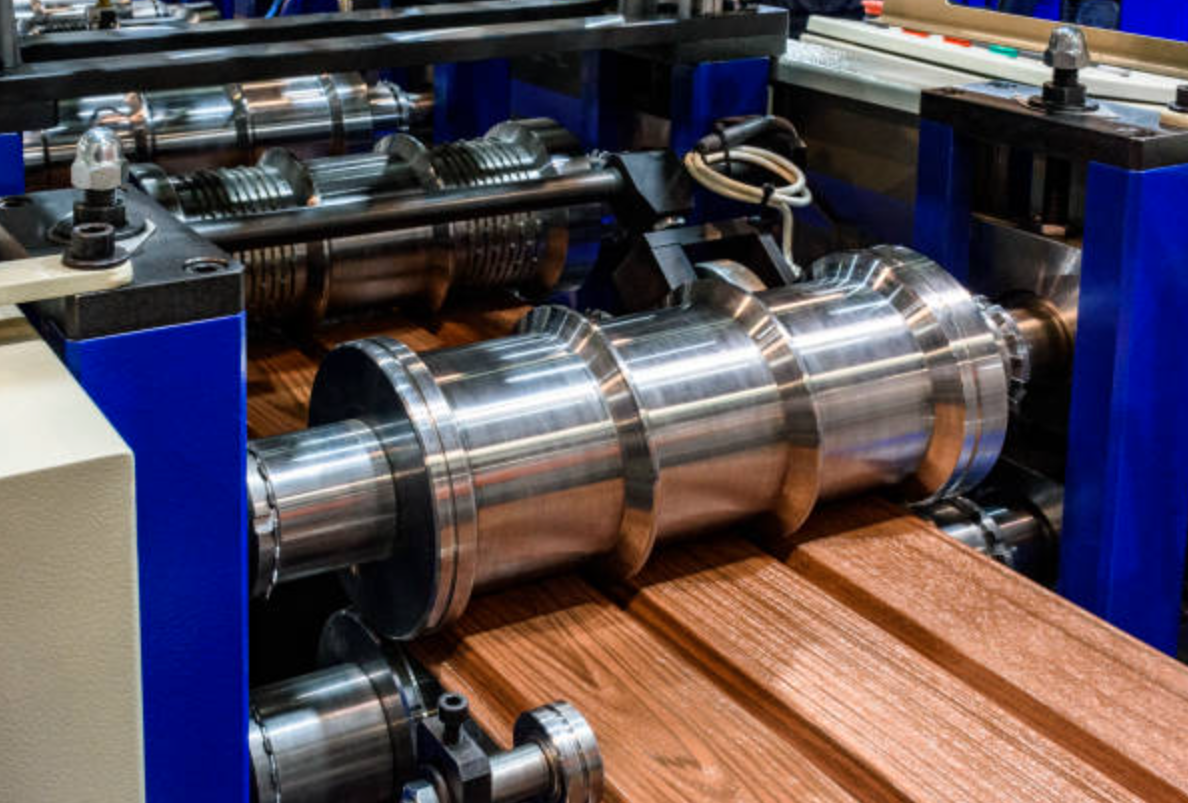Maintaining encoders on a roll forming machine is critical for ensuring precise machine operation, accurate measurements, and prolonged equipment life.
1. Key Points About Encoders on Roll Forming Machines
- Function:
By converting the rotational movement of a shaft attached to the material feed into electrical pulses, the encoder allows the machine to precisely determine the length of the formed metal strip. - Placement:
Typically, the encoder is mounted near the exit end of the roll forming machine, close to the shearing station, to accurately measure the final length of the formed product. - Type of Encoder:
Most commonly, a rotary incremental encoder is used on roll forming machines due to the need to track continuous movement and count pulses to determine distance. - Application in Cut-to-Length Operations:
The encoder data is crucial for automated cut-to-length applications, where the machine automatically stops and cuts the material at the desired length.
2. Regular Inspection
- Visual Inspection: Check for physical damage, such as cracks or wear on the housing.
- Cable Check: Look for frayed or damaged cables and loose connections.
- Mounting Security: Ensure the encoder is firmly mounted without excessive vibration or misalignment.
3. Keep It Clean
- Use a soft, dry cloth or compressed air to remove dirt, dust, and debris from the encoder's housing and sensing areas.
- Avoid using high-pressure air, as it can force particles into the encoder's internal components.
- Clean optical or magnetic sensing elements with a lint-free cloth and an appropriate cleaning solution if specified by the manufacturer.
4. Protect Against Contaminants
- Use proper seals and enclosures to protect encoders in harsh environments.
- If the machine operates in environments with oil, water, or chemicals, ensure the encoders have adequate IP (Ingress Protection) ratings.
- Avoid exposing the encoder to extreme temperatures beyond its operating range.
5. Electrical Maintenance
- Check Connections: Tighten any loose electrical connections.
- Test Signal Integrity: Use an oscilloscope or multimeter to verify signal output and confirm no interference or degradation.
- Grounding: Ensure the encoder and machine are properly grounded to prevent electrical noise or damage from surges.
6. Lubrication
- For encoders with mechanical components, such as bearing-based rotary encoders, check and maintain lubrication as recommended by the manufacturer.
7. Calibrate Regularly
- Perform routine calibration to ensure the encoder provides accurate feedback. Follow the machine manufacturer's guidelines for calibration frequency and procedure.
- Use diagnostic tools to verify position and speed readings against expected values.
8. Prevent Vibration Damage
- Minimize vibration and shock to the encoder by using proper dampening techniques or shock-absorbing mounts.
- Check for misalignments in the shaft or mounting that could lead to excessive wear.
9. Spare Parts and Replacements
- Keep spare encoders, cables, and mounting components readily available.
- Replace encoders showing consistent inaccuracies, damage, or failures during inspections.
10. Document Maintenance
- Maintain detailed logs of all inspections, cleaning, calibration, and repairs.
- Track the lifespan of encoders to plan for timely replacements.
11. Training and Awareness
- Train operators and technicians on encoder functionality, maintenance, and troubleshooting.
- Encourage the prompt reporting of any encoder-related issues.



